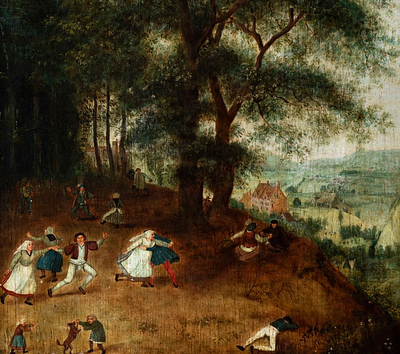Roman school of the seventeenth century. "Orla of flowers with scene of Isaac and Jacob". Oil on canvas. Relined.
Lot 71
About Seller
Setdart Auction House
Carrer Aragó 346
Barcelona
Spain
Setdart Subastas was born in 2004 and is currently the first online art auction in Spain with solidity, prestige and reliability guaranteed by our more than 60,000 users. Setdart has a young, dynamic and enterprising team ready to successfully manage the purchase and sale of art works through custom...Read more
Estimate:
EUR€4,000 - EUR€5,000
$4,210.53 - $5,263.16
Absentee vs Live bid
Two ways to bid:
- Leave a max absentee bid and the platform will bid on your behalf up to your maximum bid during the live auction.
- Bid live during the auction and your bids will be submitted real-time to the auctioneer.
Bid Increments
| Price | Bid Increment |
|---|---|
| EUR€0 | EUR€10 |
| EUR€200 | EUR€25 |
| EUR€500 | EUR€50 |
| EUR€1,000 | EUR€100 |
| EUR€3,000 | EUR€200 |
| EUR€5,000 | EUR€500 |
| EUR€10,000 | EUR€1,000 |
| EUR€20,000 | EUR€2,000 |
| EUR€50,000 | EUR€5,000 |
About Auction
By Setdart Auction House
Jun 30, 2021
Set Reminder
2021-06-30 08:30:00
2021-06-30 08:30:00
America/New_York
Bidsquare
Bidsquare : Old Masters
https://www.bidsquare.com/auctions/setdart-auction-house/old-masters-7134
Setdart Auction House sofia@setdart.com
Setdart Auction House sofia@setdart.com
- Lot Description
Roman school of the seventeenth century. "Orla of flowers with scene of Isaac and Jacob". Oil on canvas. Relined. Measurements: 59 x 47 cm. This biblical passage is narrated in Genesis 27. In this passage, Isaac was already beginning to suffer from the passage of time and, as a result, his eyesight began to fail him. On the other hand, together with his wife Rebecca, he had two sons: Esau, the elder, and Jacob, the younger. Isaac, seeing that death was stalking him, decided to bless Esau so that he could keep everything, but first he asked him to go hunting. Rebekah took advantage of that moment to weave her plan: with the help of his mother, Jacob dressed in his brother's clothes, brought food to his father and covered his arm with a sheepskin to imitate his brother's abundant hair. In this way he induced Isaac, old and blind, to mistake him for Esau. In the painting we see the climax of the story, including how Rebecca makes the gesture of silence to her son as long as everything goes as planned. As a good baroque work, it wants to play with the spectator, to make us part of the painting and turn us into accomplices of the crime. In addition to this, the author adds a large curtain to give it that theatrical aspect. We see in this canvas a typical composition of the Baroque period, mainly in the Netherlands and Spain, although the model was also extended to other European schools, as we see here. It is a scheme that combines a garland of flowers, sometimes also of fruits, with a religious representation of devotional type. The idea is to combine the genres of religious painting and still life, seeking a greater sumptuousness and a theatrical sense, almost trompe l'oeil, very much to the taste of Baroque painting. It should be noted that, in this type of compositions, the flowers are not simply a secondary, accessory element, but are worked with the same care, with the same quality as the religious image. In fact, sometimes they even show a more skilled hand, since these works were often the result of the collaboration of a flower painter and another specialized in the figure.
- Shipping Info
-
In-house shipping available. Please inquire at admin@setdart.com.
-
- Buyer's Premium



 EUR
EUR CAD
CAD AUD
AUD GBP
GBP MXN
MXN HKD
HKD CNY
CNY MYR
MYR SEK
SEK SGD
SGD CHF
CHF THB
THB














